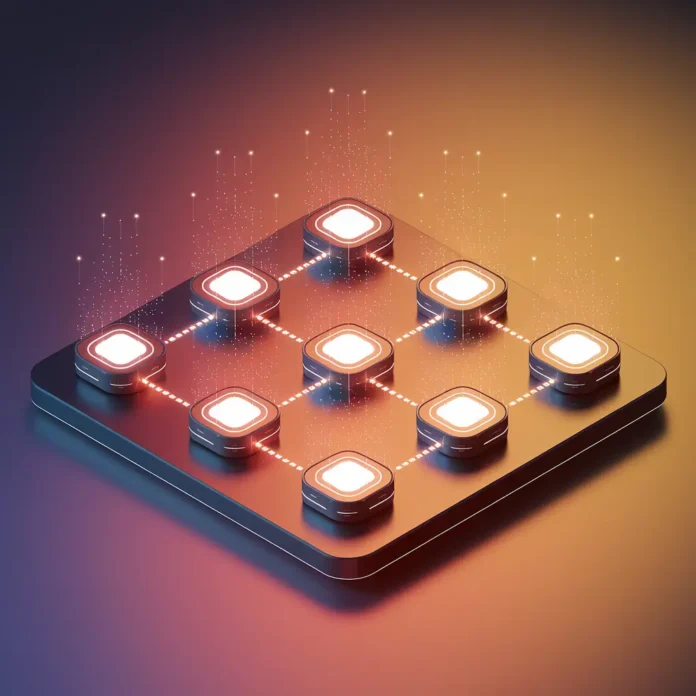Decentralized Autonomous Organizations (DAOs) represent a revolutionary step in how organizations are structured and operated. By leveraging blockchain technology, DAOs eliminate the need for traditional centralized authority, enabling transparent and autonomous governance. This comprehensive guide explores every facet of DAOs — from their foundational principles to real-world applications, potential future developments, technical considerations, and how they compare to traditional systems.
What Are Decentralized Autonomous Organizations?
Decentralized Autonomous Organizations are entities governed by smart contracts that execute decisions based on community voting. Unlike traditional companies, DAOs require no centralized leadership. Instead, token holders make decisions collectively through transparent voting systems. These organizations leverage decentralization to empower participants and foster trustless collaboration.
How Decentralized Autonomous Organizations Operate
The operational framework of Decentralized Autonomous Organizations follows three systematic phases:
- Proposal Submission: Members draft and submit proposals, ranging from policy changes to financial allocations.
- Voting Mechanism: Token holders cast votes, usually based on the number of governance tokens they possess.
- Decentralized Execution: Once approved, smart contracts automatically implement changes, reducing human intervention.
Core Principles of Decentralized Autonomous Organizations
Several core values define how Decentralized Autonomous Organizations differ from traditional entities:
- Decentralization: Removes central control, distributing power among all participants.
- Transparency: All proposals, votes, and decisions are logged on an immutable public ledger.
- Automation: Processes are encoded through smart contracts that self-execute without intermediaries.
Benefits of Decentralized Autonomous Organizations
There are several advantages to operating through Decentralized Autonomous Organizations:
- Global Inclusivity: Open governance encourages participation from a worldwide audience.
- Operational Efficiency: Smart contracts automate redundant tasks, saving time and reducing errors.
- Increased Accountability: Public and traceable records ensure that all actions are verifiable.
Challenges Facing Decentralized Autonomous Organizations
Despite their advantages, Decentralized Autonomous Organizations face hurdles, including:
- Legal Uncertainty: Varying regulations worldwide complicate DAO legality.
- Security Vulnerabilities: Bugs in smart contracts can expose the entire DAO to exploitation.
- Governance Imbalance: Low voter turnout or token hoarding can lead to centralized control.
Applications of Decentralized Autonomous Organizations
Decentralized Autonomous Organizations are transforming various industries:
- Finance: DeFi DAOs like MakerDAO manage stable assets and lending systems.
- Collective Purchases: ConstitutionDAO aimed to buy a historic U.S. Constitution copy.
- Content and Media: Creators can collectively manage and monetize work with community backing.
Examples of Decentralized Autonomous Organizations
Notable Decentralized Autonomous Organizations include:
- MakerDAO: Manages the DAI stablecoin and offers decentralized governance in financial operations.
- Uniswap: A decentralized exchange operating as a DAO for community-based protocol upgrades.
- dOrg: A flat-structured DAO for software developers that facilitates income sharing and collective decision-making.
Emerging Trends in Decentralized Autonomous Organizations
The landscape of Decentralized Autonomous Organizations is evolving rapidly with these trends:
- AI Integration: Advanced machine learning aids in better decision-making and prediction modeling.
- Hybrid Models: Combining traditional business governance with DAO transparency and decentralization.
- Legal Recognition: States like Wyoming are leading efforts to formalize DAOs legally.
Technical Best Practices for Decentralized Autonomous Organizations
To maintain credibility, Decentralized Autonomous Organizations must:
- Audit Smart Contracts: Regularly evaluate code to identify risks.
- Implement Layer 2: Adopt scalability solutions for faster, cheaper transactions.
- Prioritize UX: Build intuitive user interfaces that cater to non-developer participants.
Decentralized Autonomous Organizations vs Traditional Organizations
| Feature | DAO | Traditional Organization |
|---|---|---|
| Governance | Decentralized, token-based | Centralized, hierarchical |
| Transparency | Full ledger visibility | Limited visibility |
| Flexibility | Rapid policy shifts | Slow bureaucratic changes |
| Participation | Global, open to all | Restricted to stakeholders |
Code Implementation in Decentralized Autonomous Organizations
A simple smart contract in Solidity shows DAO basics:
Members add proposals, vote, and execute approved ideas — all autonomously.

The Future of Decentralized Autonomous Organizations
Expectations from Decentralized Autonomous Organizations include:
- Advanced Governance Models: Multi-layer systems that offer adaptation without compromising decentralization.
- Wider Legal Acceptance: Improvements in regulatory frameworks worldwide.
- Tech-forward Enhancements: Inclusion of predictive analytics, zero-knowledge proofs, and real-world asset integration.
Common Mistakes in Decentralized Autonomous Organizations
- Rushed Deployment: Skipping audits increases security risks.
- Over-centralization: Token accumulation can skew decision-making.
- Ignoring UX: Complex interfaces repel newer users, reducing engagement.
Actionable Tips for Building Decentralized Autonomous Organizations
- Ensure smart contracts undergo multiple audits.
- Encourage diverse token distribution models.
- Foster engagement with education and gamified incentives.
Frequently Asked Questions About Decentralized Autonomous Organizations
What is the purpose of Decentralized Autonomous Organizations?
To create transparent, inclusive, and automated governance systems without central control.
Are Decentralized Autonomous Organizations legal?
In some regions, yes. U.S. state Wyoming has recognized them, but laws vary globally.
How do DAOs generate revenue?
Through token sales, transaction fees, staking incentives, or service offerings.
Can anyone join a Decentralized Autonomous Organization?
Most DAOs are open; membership typically requires holding governance tokens.
What happens if a smart contract fails?
If a flaw is exploited, funds and governance may be jeopardized. This underscores the importance of audits.



